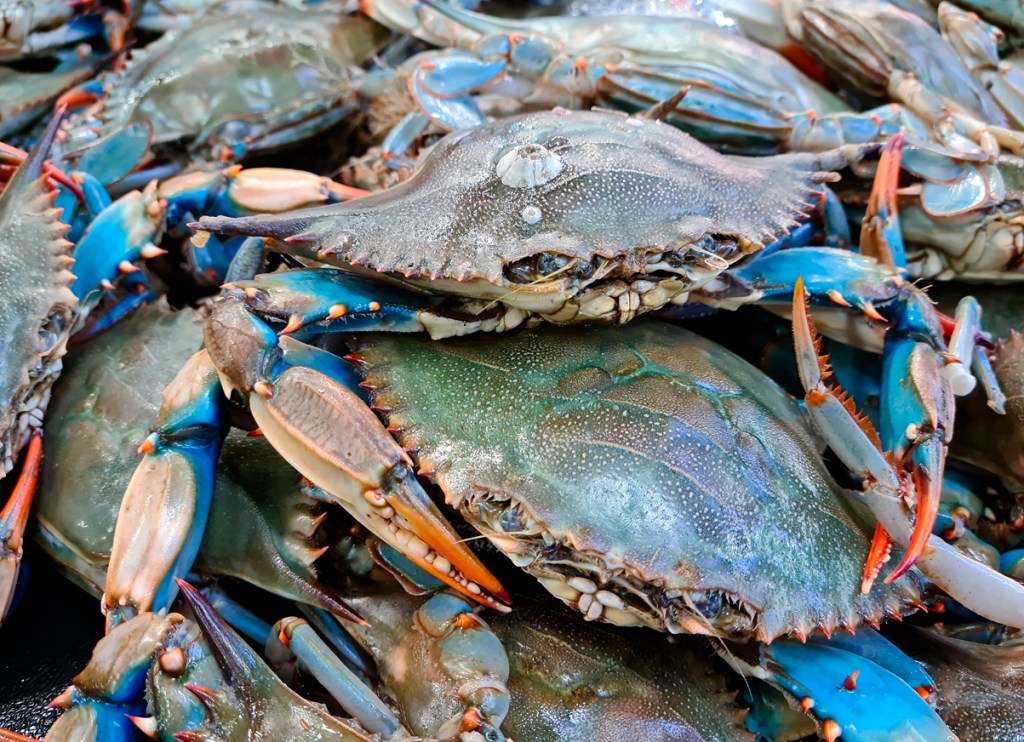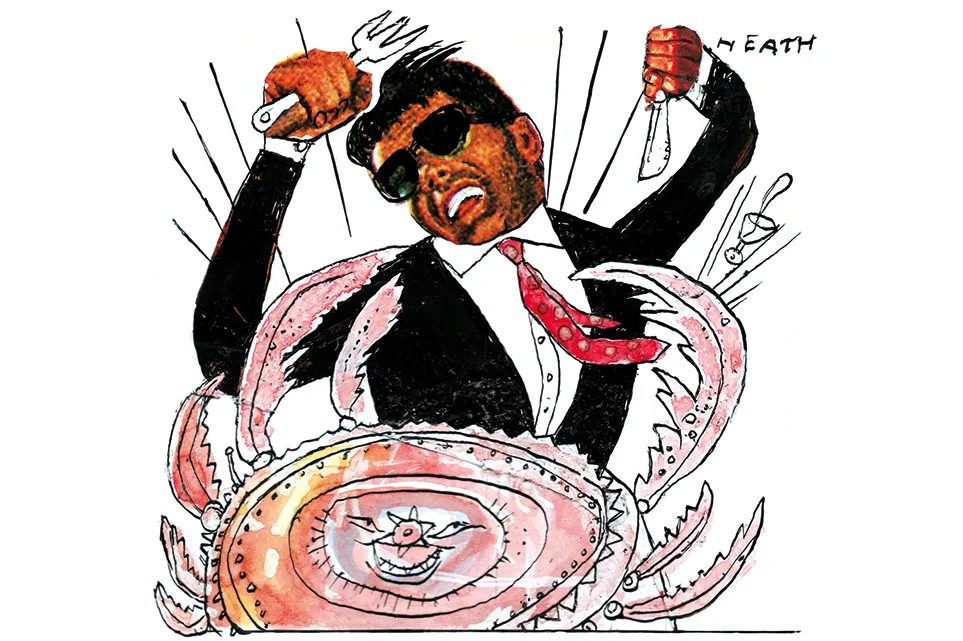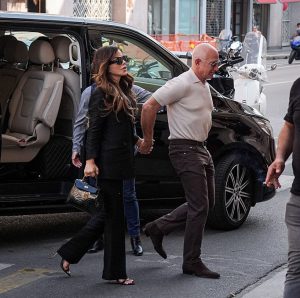Italy is under maritime siege by a foreign invader known as the granchio blu (blue crab). Like some terrifying alien that lies undetected for decades in a hideous secret lair, untold millions of the crustaceans (whose shells can grow up to nine inches wide) have suddenly emerged and are causing havoc in the country’s delicately balanced marine environment.
The blue crab arrived in Italy from America in the late 1940s in the -ballast tanks of merchant ships, but no one talked about it much until the past couple of years, during which its numbers have exploded. Some blame global warming, but the blue crab is not especially bothered by water temperature one way or the other. It lives in a whole range of climates, from Nova Scotia all the way down to Argentina.
No, the explosion in its numbers must be due to a mysterious alignment of the stars. Or else some dastardly plan set in motion by forces beyond our comprehension.
The blue crab loves lagoons and estuaries, and in Italy it is present mostly in the north-east of the country, around Venice and the nearby delta of the River Po, where fishermen call it “Il killer dei mari” — the killer of the seas.
It devours everything it can get its razor-sharp claws on, above all clams, which are a major industry in this part of Italy and the key ingredient of one of Italy’s most famous pasta dishes: spaghetti con le vongole.

The blue crab has destroyed clam production by up to a half, according to some estimates. It devours mussels and oysters too, and its vicious claws wreak havoc with fishing nets. A girl was recently attacked by a blue crab while swimming at Marsala, Sicily, and had to have eight stitches in her hand. Elsewhere, the crabs have been seen chopping off the claws of seagulls.
The blue crab devours everything it can get its razor-sharp claws on, above all clams, a major industry
Earlier this month, Prime Minister Giorgia Meloni and her right-wing coalition government allocated €2.9 million to exterminating the crustaceans. But Luca Zaia, president of the Veneto region and leading member of the Lega (one of the three governing parties) says the money from the government is nowhere near enough and is demanding that Meloni declare the blue crab crisis a national emergency.
“The figures are disturbing. Those caught relating to 2019 in our lagoon were eighty-seven kilos. In 2022, we caught 10,000 kilos. This year, 326 metric tons have been caught! The females each produce between two and eight million eggs. Our lagoon is becoming an explosive bomb,” Zaia told a press conference last week at his regional headquarters in the sixteenth-century Palazzo Balbi on the Grand Canal in Venice. One metric ton equals 2,204 pounds, so that’s 720,000 pounds of blue crab caught in the Venice Lagoon alone this year.
Holding up a live blue crab supplied by local fishermen for the cameras, Zaia said: “Here it is. A male. Look at those claws. They break everything. This crab is breaking our balls.”
As Paolo Tiozzo, president of the Alleanzadelle Cooperative Pesca, the fishermen’s professional body, said in reference to the Po delta that lies just to the south of Venice: “The blue crab is putting at risk the survival of one of the most important places in the whole of Europe for the production of clams. Millions of euros of this product have gone up in smoke, or rather, have been eaten by these ‘foreign’ crabs.”
Until a couple of years ago, it was rare for blue crabs to get caught up in fishermen’s nets in the Po delta, Fausto Gianella, president of a local clam fishermen’s cooperative, told the Italian press in July. But now the numbers have climbed to biblical plague proportions. “All we see are blue crabs. They have literally eaten everything else. Just yesterday I caught un quintale (100 kilos) of blue crabs,” he said.
There is, however, an upside. The blue crab, despite its horror-film electric-blue appearance, is delicious and turns red when it is cooked. It tastes like lobster but at €10 a kilo it costs a third of the price. So far, however, it is on sale only in a few places in Italy.
In America, where it is highly prized, it is especially common in Virginia and Maryland, above all around Chesapeake Bay, where they catch it when it has just changed shell and call it the soft shell crab. They deep fry it whole in batter and eat it shell and all. God Bless America!
The Italians would not be seen dead doing anything like that with a crab of whatever color. But they are world leaders at turning defeat into victory, and the internet is already alive with granchio blu recipes.
Meloni herself is right behind the idea. Last weekend, her family posted a photo of her in Puglia brandishing a huge plate of blue crabs with the caption: “Today we’re eating blue crab. Eccezionale!” However, to reduce numbers to levels that safeguard indigenous species such as the clam would require the consumption of colossal numbers of the rampant blue crab. Surely the Italians are never going to allow spaghetti al granchio blu to replace spaghetti con le vongole as their signature shellfish pasta dish?
Regardless of Meloni’s imprimatur, eating the blue crab will not solve the crisis. Only extermination, or exportation, above all back to where it came from, can do that.
This article was originally published in The Spectator’s UK magazine. Subscribe to the World edition here.

























